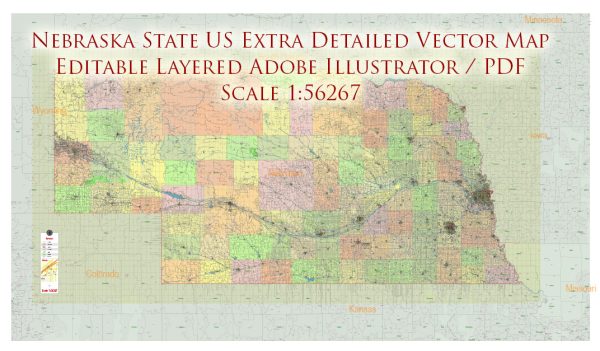Nebraska, a state located in the Great Plains region of the United States, has a history of urban development that reflects its agricultural roots, economic shifts, and demographic changes. While Nebraska is often associated with its vast expanses of farmland, it also has a number of cities and towns that have played important roles in the state’s development.
- Native American Influence: Before European settlement, Nebraska was home to various Native American tribes, including the Omaha, Pawnee, and Sioux. These indigenous peoples had their own settlements and trading networks, contributing to the early patterns of human habitation in the region.
- Westward Expansion and Settlement: The 19th century saw a surge in westward expansion, with pioneers and settlers moving into Nebraska along trails like the Oregon Trail and the Mormon Pioneer Trail. As settlers established homesteads and towns, the urban landscape began to take shape.
- Railroad Development: The construction of railroads played a crucial role in Nebraska’s urban development. Towns often sprang up along railroad lines, serving as transportation hubs and centers of commerce. Cities like Omaha and Lincoln owe much of their early growth to their strategic locations along railroad routes.
- Agricultural Economy: Nebraska’s economy has long been dominated by agriculture. The state’s urban areas have historically been influenced by the agricultural sector, serving as market centers and processing hubs. Cities like Omaha became important meatpacking and processing centers.
- Omaha and Lincoln: Omaha, the largest city in Nebraska, has a rich history as a transportation and trade hub. It was a key location for the Union Pacific Railroad and developed into a significant center for banking, commerce, and industry. Lincoln, the state capital, grew around the location of the University of Nebraska and has a more government and education-oriented history.
- Modern Urbanization: In the 20th century, Nebraska’s cities continued to evolve with the changing economic landscape. Urbanization increased, and suburbs developed around major cities. The state’s urban areas diversified economically, incorporating technology, finance, and healthcare industries alongside traditional sectors.
- Cultural and Educational Centers: Nebraska’s cities are also centers of culture and education. Museums, universities, and cultural institutions contribute to the vibrancy of urban life. Omaha, for example, has a thriving arts and music scene, while Lincoln is known for its historic architecture and the University of Nebraska.
- Population Growth and Demographic Changes: Like many other states, Nebraska has experienced demographic changes over time. Immigration, internal migration, and other factors have contributed to shifts in population distribution and the cultural makeup of urban areas.
In summary, Nebraska’s urban development is closely tied to its agricultural heritage, transportation infrastructure, and economic activities. The cities have evolved from small railroad outposts to diverse urban centers that reflect the state’s changing economic and social dynamics.


 Author: Kirill Shrayber, Ph.D.
Author: Kirill Shrayber, Ph.D.